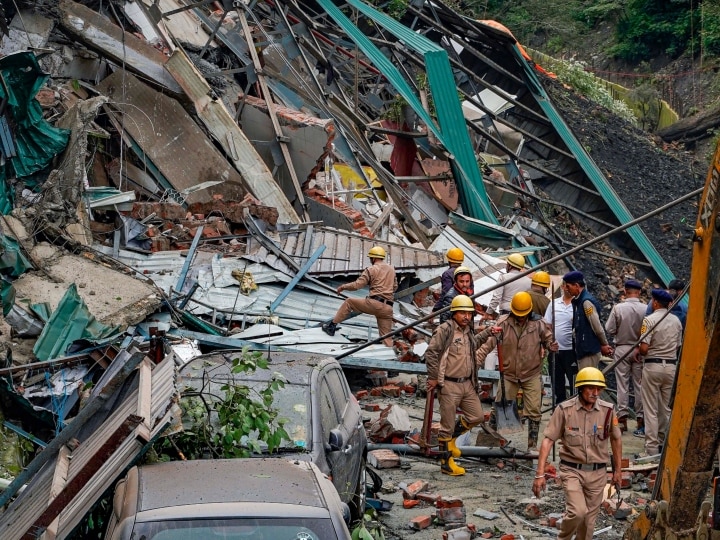Himachal Pradesh is looking at a long year ahead effort to reconstruct the decimated infrastructure caused by the torrential monsoon rain, a challenge Chief Minister Sukhvinder Singh Sukhu believes the state is more than capable of overcoming.
According to news agency PTI, Sukhu revealed that the estimated cost of the destruction incurred during two severe spells of heavy rainfall – one in the current week and another in July – totals approximately Rs 10,000 crore.
The recent downpours triggered destructive landslides throughout the region, obstructing roads and causing the collapse of numerous buildings. The catastrophe resulted in a reported death toll of more than 60, with concerns remaining of more being trapped under the debris.
Sukhu acknowledged the time-consuming process of restoring roads and water projects but stressed that the government is expediting the recovery efforts. He expressed determination in Himachal's ability to bounce back, saying, "Our goal is to fully reinstate the infrastructure within a year. This is my commitment." He further emphasized, "While this challenge is formidable, akin to a mountainous task, we are resolute and will not shy away from it."
In the broader context, the state administration remains steadfast in its vision to achieve "self-reliance" for Himachal Pradesh within four years and to elevate the region to the status of the country's "most prosperous" state within a decade. Sukhu, whose Congress government assumed power last December, noted that the recovery from this tragedy will demand a year's time.
According to the PTI report, Sukhu attributed the substantial damage to the intensity of the rainfalls, particularly since Sunday. He said it was an "unprecedented" event and around 50 people lost their lives in a single day. He also pointed to deficiencies in "structural designing" within the state. Structures encroach upon natural water pathways, often without proper consideration for design elements. "Instead of the river entering homes, it was homes that entered the river," he remarked.
While refraining from squarely placing blame on the widening of roads by the National Highways Authority of India, Sukhu indicated that most landslides occurred away from the edges of these expanded roadways.
Addressing potential climate change implications, the Chief Minister suggested that evolving weather patterns could be a contributing factor. He cited the instance of unprecedented rainfall in the Lahaul-Spiti region, underscoring the scale of the environmental shifts.
Sukhu alluded to forthcoming guidelines and stricter enforcement of building regulations. He emphasized aspects such as proper drainage systems, comprehensive soil assessments for construction sites, and an in-depth evaluation of floor-bearing capacities.
Sukhu also advocated for a change in the central government's norms for assisting states hit by natural calamities. He argued that hill states and those in the Northeast should receive increased support. He critiqued the existing allocation of Rs 1.5 lakh for every kilometre of damaged road, deeming it insufficient. Sukhu further asserted that Himachal Pradesh's limited representation in Parliament should not diminish its significance, urging the central government to provide a specialized package, considering the state's vital role as the "lungs of northern India".
Sukhu concluded the conversation by encouraging tourists to continue exploring Himachal Pradesh, expressing optimism about the eventual restoration of roads leading to popular destinations like Shimla and Kangra Valley. He warmly invited tourists to partake in festivities such as Diwali and the New Year within his state once the monsoon has subsided, assuring that Himachal Pradesh remains a welcoming and inviting destination.


